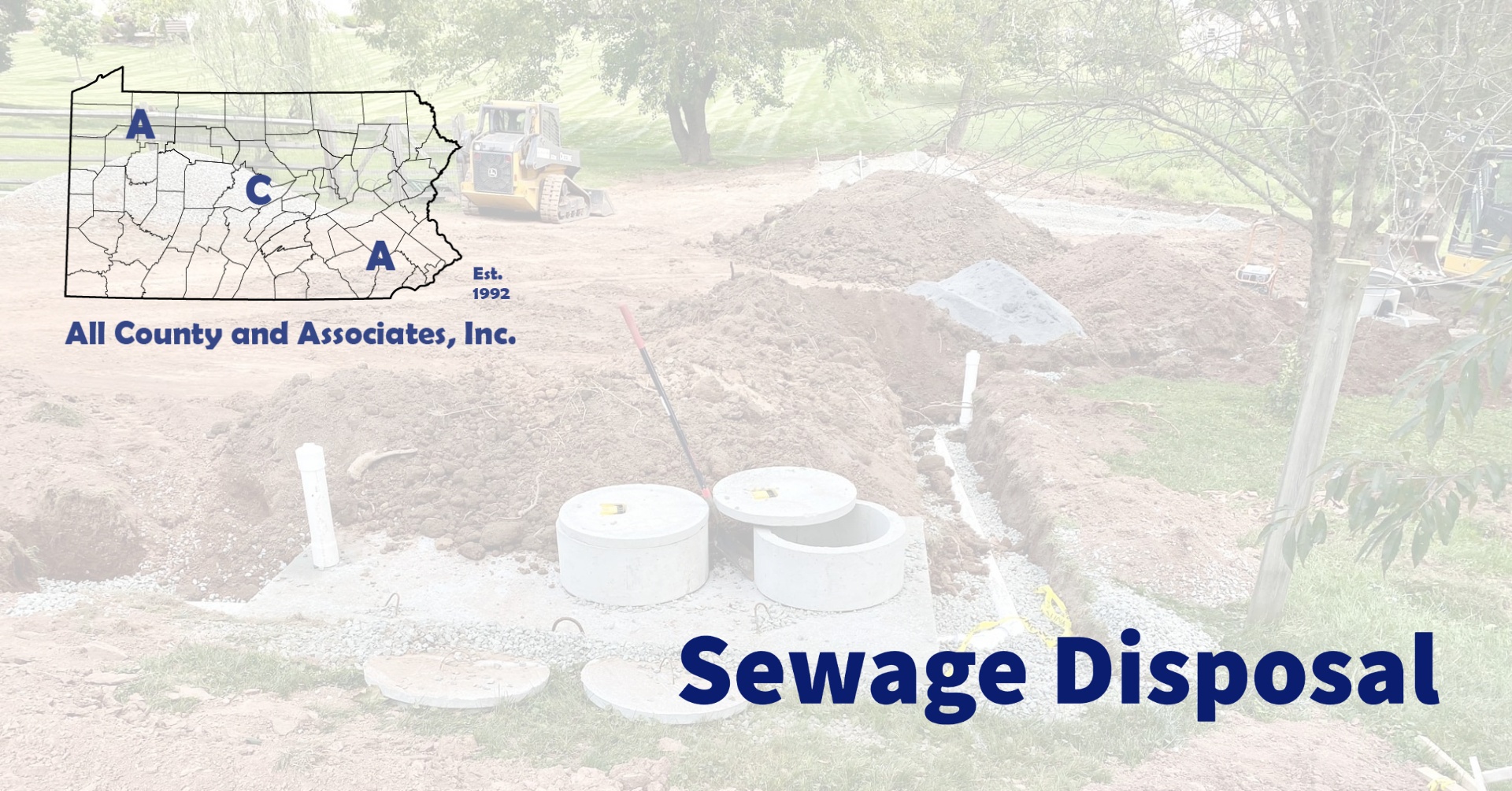
According to the Pennsylvania DEP, approximately 26% of homes have an on-lot sewage system. In 2019, US Census construction data, shows that 16% of new homes rely on on-lot systems. With so many homes having on-lot sewage systems, let’s take a look at some basics.
Codification
The Pennsylvania Code, Chapter 73, sets the standards for system design and construction. In short, there are three basic criteria. First are separation distances, which are the horizontal distance from a component of the system to a feature. Next, is the size of the absorption area, which is where the liquid soaks back into the soil. Finally, is the size of the septic tank, which is where the solids settle from the liquid.
Key Separation Distances
System Tanks
- 10 feet to buildings, swimming pools, property lines, easements, right-of-way, and public water supplies
- 25 feet to a surface water (stream, lake, etc.) or cistern used for water supply
- 50 feet to an individual on-lot well
Absorption Area
- 10 feet to buildings, swimming pools, property lines, easements, right-of-way, stormwater systems, and public water supplies
- 50 feet to a surface water (stream, lake, etc.)
- 100 feet to an individual on-lot well
Spray Field
- 10 feet to a public water supply
- 25 feet to property lines, easements and rights-of-way
- 50 feet to a surface water (stream, lake, etc.)
- 100 feet to an individual on-lot well, building or swimming pool
Absorption Area Sizing
For a single-family dwelling, the number of bedrooms determines the size of an absorption area. As a result, a single-family home with three or fewer bedrooms has a flow rate of 400 gallons per day (GPD). Furthermore, if there are more bedrooms, each bedroom increased the flow rate by 100 GPD. For community on-lot sewage systems, apartments and nonresidential establishments, use flow rates from Section 73.17. In fact, this section breaks the values into two tables. One table for residential establishments and another for non-residential establishments. Non-residential establishments will have a minimum volume of 200 GPD.
The sizing calculation combines this information with the absorption area percolation rate. Table A or Table B of Section 73.16, provides a coefficient. The minimum square feet for the absorption area are the coefficient times the daily flow rate.
Septic Tank Sizing
Section 73.31 establishes a minimum tank size of 900 gallons. From there, the tank size uses the same daily flow rate as the absorption area. For single family dwellings, this is 400 GPD for three bedrooms or fewer, and an extra 100 GPD for each bedroom thereafter. Since most single-family homes are four bedrooms or fewer, the lowest tier applies. In this tier, the sizing is 3.5 times the flow exceeding 400 GPD, plus 900 gallons. This means most new homes or updated systems will have a 900 to 1,250-gallon tank.
Who is ACA?
Started in 1992 and located in Chester County, PA ACA has grown to become a full-service civil engineering firm. Today, we merge professional services with practical knowledge for residential and commercial projects. No matter the scale, from installing a fence, to building a structure or developing land, you need permits. Because the approval process includes many permits and agencies, it can be a headache. Working with ACA’s full-service team saves you time, money, and headaches. Every step of the way, we are here to support you and educate you about the process. Here are some of the basic services we provide:
Construction Management | Civil Engineering | Environmental Permitting | Septic System Testing and Design | Land Surveying | Wetland Delineations and Mitigation
Please feel free to browse our website or if working on a project or need help, contact us at (610) 469-3830.
